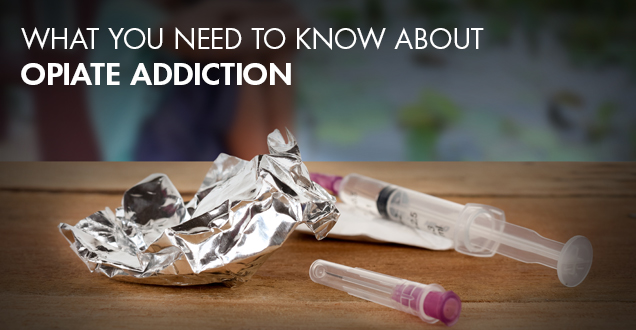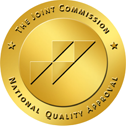
Being aware of the risks involved as well as the signs of opioid abuse is vital to helping you or a loved one get proper help. To help keep the public educated, here are some of the things you need to know to understand the opioid abuse epidemic.
Earlier this month, it was revealed that music legend, Prince, was the latest celebrity to die from a drug overdose. According to a report by the Midwest Medical Examiner’s Office in Minnesota, the pop star died of a self-administered accidental overdose of fentanyl, a powerful synthetic opioid painkiller. His death shines yet another light on the very serious opioid abuse epidemic affecting public health in the United States.
According to The Centers for Disease Control and Prevention, more people died from drug overdoses in 2014 than in any year on record. Of the deaths, more than 60% involved opioids and it’s estimated that a staggering 78 Americans die from opioid overdose per day.
What is an opioid?
To put it simply, opiates or opioids are a class of drugs that are used to treat pain. They are legal drugs, such as medically prescribed Oxycontin and Vicodin, as well as illegal street drugs like Heroine. Both are chemically related and interact with opioid receptors on nerve cells in the brain, brainstem, spinal cord, gastrointestinal tract, and other organs.
Here is a list of commonly used opioids according to the U.S. Department of Health and Human Services:
• Oxycodone (OxyContin, Percodan, Percocet)
• Hydrocodone (Vicodin, Lortab, Lorcet)
• Diphenoxylate (Lomotil)
• Morphine (Kadian, Avinza, MS Contin)
• Codeine
• Fentanyl (Duragesic)
• Propoxyphene (Darvon)
• Hydromorphone (Dilaudid)
• Meperidine (Demerol)
• Methadone
When opioid drugs or our body’s natural opioid (endorphins) are released within the body and bind to opioid receptors, they alter the way our body regulates pain, breathing, and digestion. For some people, the binding of these drugs to opioid receptors in reward regions of the brain produces a sense of wellbeing and has a high risk of dependence or addiction if not used properly (National Institute on Drug Abuse).
What Are The Risks of Taking Opioids?
Opioids are often prescribed in pill form by doctors after surgery or to help patients deal with chronic pain. Opioid abuse and addiction can occur when opioids are not used exactly as directed by doctors or are repeatedly abused.
Long-term opioid use changes the way nerve cells work in the brain known as opioid dependence. It can happen to people who take opioids for a long time to treat pain as prescribed by their doctor. The nerve cells grow accustomed to having opioids around. When they are taken away suddenly, the person can experience unpleasant mental and physical feelings and reactions known as withdrawal.
Here are common opiate withdrawal symptoms:
• Nausea, vomiting and dry mouth
• Sleepiness and dizziness
• Diarrhea
• Confusion
• Depression
• Low levels of testosterone that can result in lower sex drive, energy, and strength
• Itching and sweating
Over time, more of the drug is needed for the same pain treatment effect, which is known as drug tolerance. This can mean that a higher dose is needed or that a person is showing signs of opioid abuse and requires more of the drug to prevent withdrawal symptoms.
How Are Opioids Abused?
Opioids are abused when people actively misuse the drug as it was designed and intended. For example, when a higher dose is taken than was prescribed or when an opioid is taken which had been prescribed for someone else.
Because opioids attach to opioid receptors, they not only diminish the perception of pain but can cause a person to feel relaxed and euphoric by affecting areas of the brain that deal with pleasure.
Opioids in their medically prescribed pill-form are designed to be released over a longer period of time. For example, extended-release Oxycodone is designed to release slowly and steadily into the bloodstream when taken orally, which minimizes its euphoric effect.
After long-term, repeated use, it can be common for opioid abusers to begin crushing the pills into powder and snort or inject the drug, causing the drug to enter the bloodstream and brain to reach the euphoric feeling faster.
Someone who abuses opioids in this way may have developed a clear sign of addiction and have strong urges for the intense euphoria only opioids can deliver. They no longer feel satisfied by life’s simple pleasures (such as desserts, playing with pets, or a walk along the beach).
How Does Opiate Addiction Happen?
Opioid addiction is when people compulsively seek out the drug to achieve its pleasure-inducing effects even though they know it can have damaging effects. Most notably, stimulation of opioid receptors in deeper brain regions results in drowsiness and that can lead to hypoventilation.
In fact, taking just one large dose of prescription pain pills or Heroine could cause someone’s breathing to stop.
In some cases, when people addicted to prescription opioids are no longer able to get access to prescription pain medication, they typically turn to Heroine, which commonly leads to drug abuse and overdose as well.
Because opioids are incredibly powerful, individuals prescribed opioid medications should only take them under appropriate medical supervision. They should also be medically supervised when stopping use to reduce or prevent withdrawal symptoms and overdose.
Are There Treatments for Opioid Abuse?
People who abuse or are addicted to prescription opioid medications can be treated. The first step is to undergo medically supervised detoxification to help reduce withdrawal symptoms which can last from hours to weeks depending on the severity of the abuse. This process is both physically and mentally demanding and the reason why many people return to their addictive behavior. The most effective approach has been proven to introduce behavioral treatment combined with medications.
Casa Palmera offers treatment for Opioid Abuse for people who are addicted to prescription opiates. Upon evaluation, the treatment plan may include medically supervised detoxification followed by behavior modification treatments combined with medications. We offer this comprehensive help to those afflicted so that they can begin to enjoy life again.




